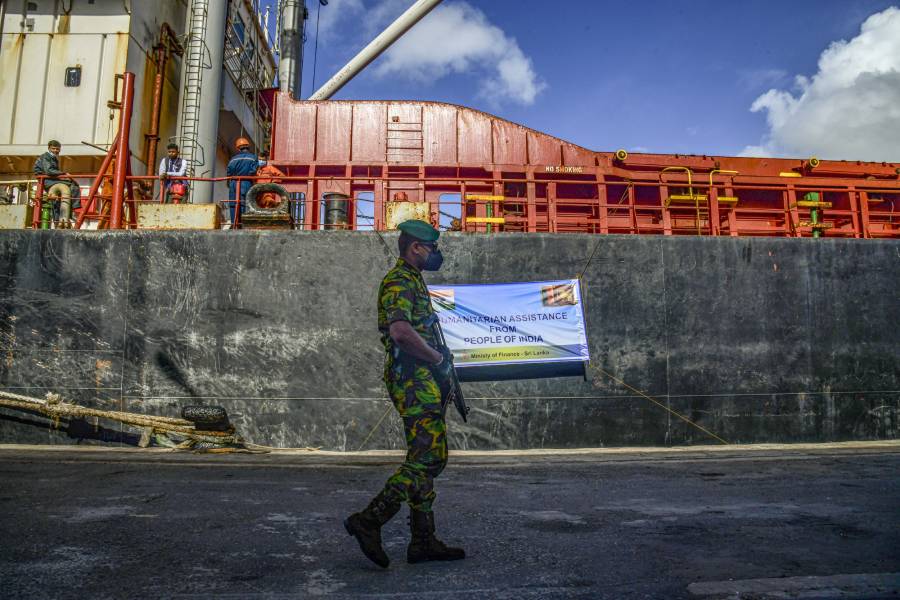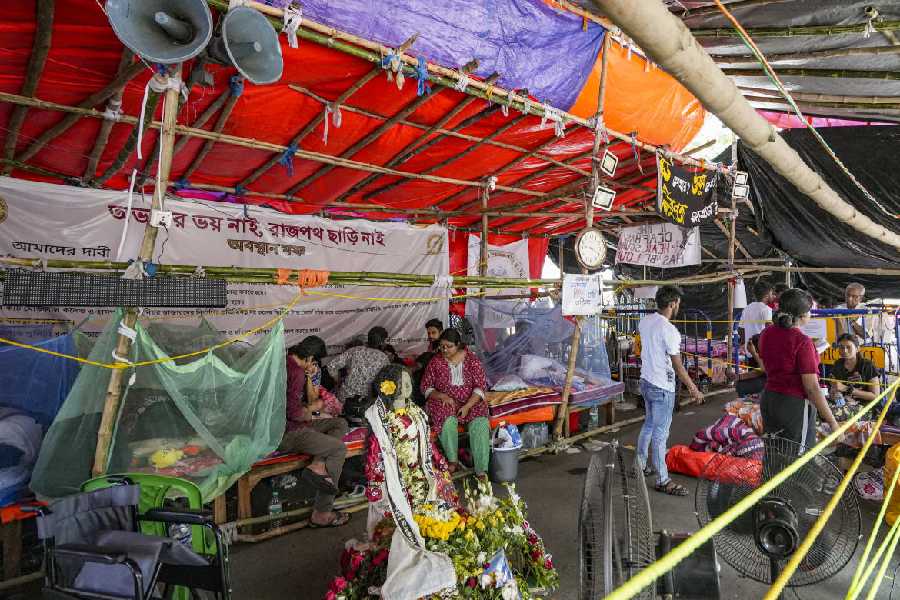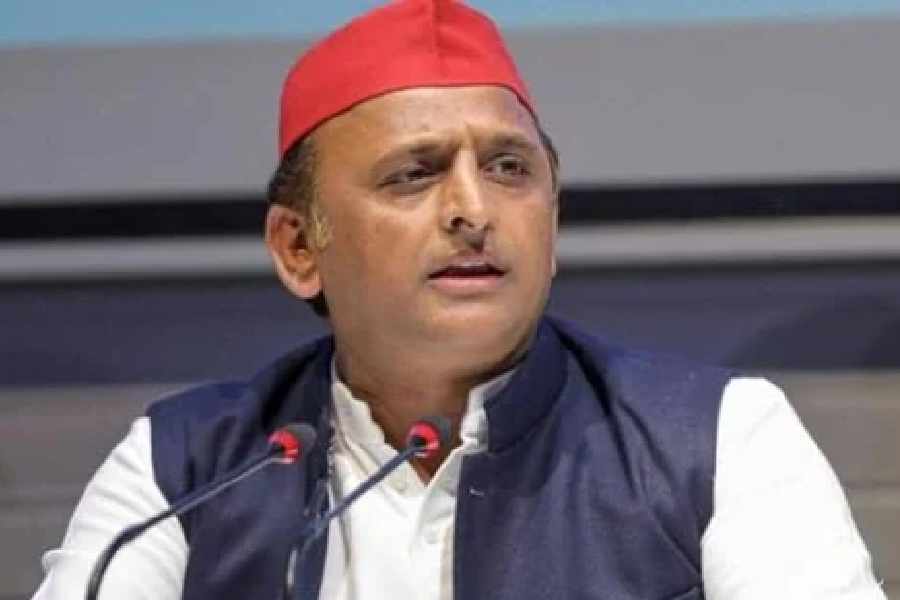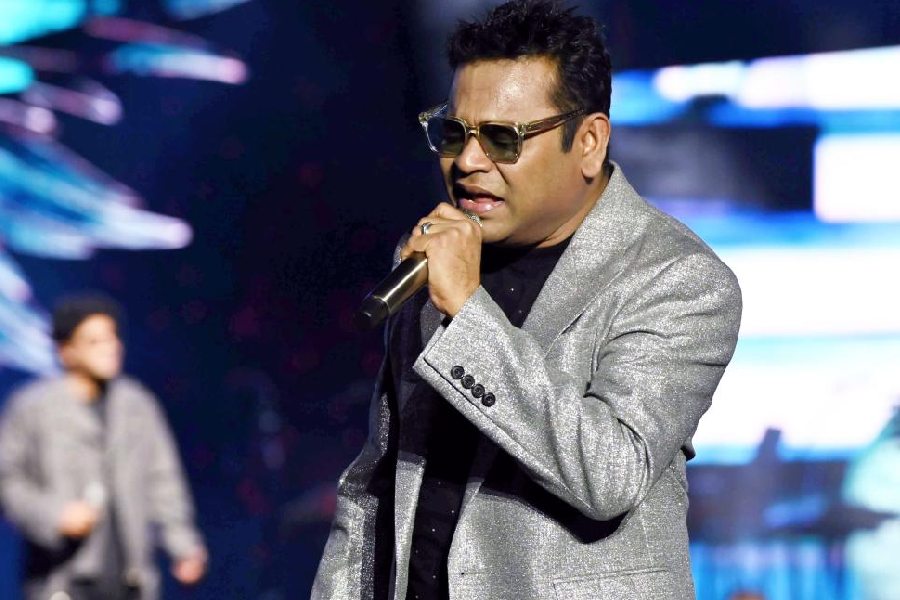As political turmoil churns India’s immediate neighborhood, Prime Minister Narendra Modi’s government has been using a relatively new asset to compete with China for influence: the financial wherewithal that comes with a fast-growing economy.
When Sri Lanka suffered economic catastrophe in 2022, India stepped in with more than $4 billion in aid. In tiny neighboring Bhutan, which has boundary disputes with China, Modi this year doubled India’s assistance, to $1 billion over five years. In Bangladesh, he provided billions for infrastructure projects to back that country’s autocratic leader, who promoted India’s interests until she was ousted in August.
The latest beneficiary is the Maldives. Its new president, Mohamed Muizzu, campaigned last year on an “India Out” platform, demanding that Modi withdraw a small military contingent from the archipelago nation. But that seemed forgotten Monday, when Muizzu arrived in New Delhi for a state dinner, a photo opportunity at the Taj Mahal with his wife, and more than $750 million in Indian aid to bail his government out of extreme fiscal stress.
“India is a key partner in the socioeconomic and infrastructure development of the Maldives and has stood by the Maldives during our times of need,” said Muizzu, standing next to Modi.
India’s economy is growing at about 7%, while China and its other neighbors struggle to return to prepandemic growth levels, according to the World Bank. Political and business leaders increasingly see India, despite frustrations with its bureaucracy, as an exciting partner for deals and trade agreements, with an economy that has yet to reach its full potential.
Many poorer Indians have seen little benefit from that growth, as the country still struggles to generate enough employment. But it has provided the government with much-needed cash to grease diplomatic wheels, while China’s economic struggles have forced it to somewhat reduce its regional largesse.
The newfound leverage is coming in handy for India. It has faced repeated diplomatic setbacks in the region, where its traditional influence had been waning in the face of China’s aggressive push. Over the past year, India-friendly leaders in at least three countries were either voted out or toppled in protests.
“India is able to deploy much more power now in the neighborhood, and the economic clout is far stronger than it was; there’s no doubt about it,” said Nirupama Menon Rao, who was once India’s foreign secretary. “But the political interests that bind us to the neighborhood, I think they are constant.”
Even leaders in the region who are “traditionally labeled or stereotyped as anti-India” have little choice but to work with New Delhi, Rao said. That is not just for immediate financial help, but to align themselves with India in the longer term, in the hope that its economic potential can bring them future windfalls.
Regional leaders are showing a “high seriousness in understanding the growing economic clout and the place that India is taking on the global stage,” Rao said. India, in turn, is taking a more pragmatic approach to some of its neighbors than it once did, avoiding “histrionics” and “diplomatic theater,” she said.
A hard lesson came this year from Bangladesh, the country of 170 million people that shares a 2,000-mile border with India.
India was seen as a staunch protector, financially and diplomatically, of Sheikh Hasina, Bangladesh’s increasingly autocratic prime minister. As Hasina persecuted critics and opponents, India used its diplomatic leverage to urge her Western critics to back off. In Bangladesh, anger against her began to translate into anger against India.
When she was driven out of office in August — toppled by huge protests, which surged drastically after her security forces killed hundreds of demonstrators — Hasina fled to India. Her continuing presence there has created a dilemma: On the one hand, India wants to signal that it will stand by its friends. But sheltering Hasina will cause problems as India tries to regain ground with Bangladesh’s new political powers.
But Paul Staniland, a political scientist at the University of Chicago and the Carnegie Endowment for International Peace whose research focuses on South Asia, called that a more “mundane” challenge than it might once have been and said India’s growing economic might was an important reason for that.
“India’s neighbors are certainly interested in autonomy from India and having the option to engage with China and other outside states. But India is a massive economic and political presence that all governments have to at least do business with,” Staniland said.
He added that some of India’s regional relationships were now characterized by “a restrained and respectful posture from Delhi combined with tangible efforts to cooperate,” echoing a point made by Rao. That approach, he said, “limits nationalist backlash in these neighboring states while creating incentives to work together.”
India’s current relationship with Sri Lanka is one example.
After the island nation’s civil war ended in 2009, China established a huge presence there, bankrolling the lavish development projects of a populist president. Officials in Colombo, even ones sympathetic to India, complained that New Delhi’s outreach was slow and bureaucratic by comparison.
Sri Lanka’s economic collapse two years ago, largely caused by mismanagement and reckless spending, changed that perspective. China was seen as conspicuously absent, and it was hesitant about renegotiating the terms of Sri Lanka’s debt. India seized the opportunity, stepping in with $4 billion in various forms of support.
Its change of approach was even more visible on the political front. Once it became clear that Sri Lanka’s old guard, including politicians close to India, had been discredited by the economic collapse, Modi’s government began warming up to other players.
Months before the September presidential election, it hosted Anura Kumara Dissanayake, the leader of a small leftist party with an anti-India past. He seemed best positioned to ride the public’s anger into office, and both sides clearly wanted to overcome that history. When Dissanayake won a comfortable victory last month, India’s top diplomat in Colombo was there within hours to congratulate him.
Rao said India’s traditional ties with its neighbors, combined with its growing financial resources, would serve it well in its competition with China.
“China continues to flex a lot of economic muscle, there’s no doubt,” Rao said. “But China, I think, has not really demonstrated its capacity to be the kind of first responder that India is when it comes to crisis situations that face our neighbors. And that, I think, is a very critical factor.”
The New York Times Services










